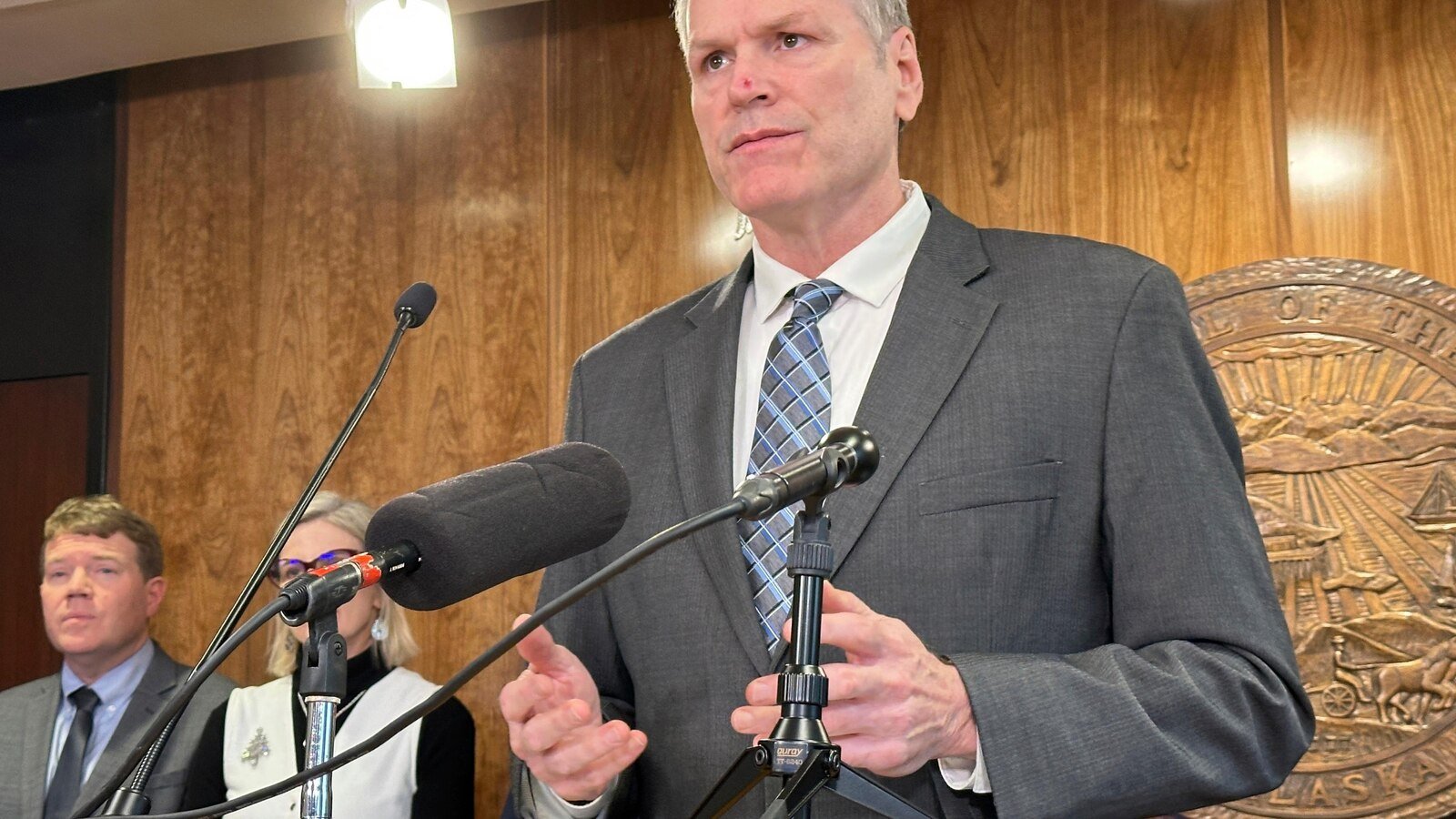Juneau, Alaska – The Trump administration is sending three members of the cabinet to Alaska this week, since it performs oil drilling in the pristine refuge of the Arctic and revitalized wildlife. Natural Gas Project That is languished for years.
The visit of the Interior Secretary of the Doug Burgum Department, the Secretary of Energy Chris Wright and the administrator of the Environmental Protection Agency Lee Zeldin occur after Trump signed an executive order Earlier this year, it was aimed at increasing drilling, mining and fogging of oil and gas in Alaska. It also comes in the middle Rate conversations with the Asian countries that are considered as possible leverage for the Administration to ensure investments in the proposed liquefied Alaska Natural Gas Project.
Its itinerary includes a meeting on Sunday with resource development groups and the US sensations.
Federal officials also plan to visit the Prudhoe Bay oil field on Monday, near the Arctic Ocean coast and more than 850 miles (1,368 kilometers) north of Anchorage, and speak at the Annual Energy Conference of Republican Governor Mike Dunleavy on Tuesday in Anchorage.
While it is not unusual for US officials to visit Alaska during the warmer weather months, Dunleavy’s office said the visit of the officials is significant. Dunleavy, A Trump allyHe said he is grateful for an administration that “recognizes the unique value of Alaska.”
It is expected that the representatives of the government and the industry of several Asian countries, including Japan, participate in a part of the trip, reflecting the pressure of the United States to invest in the pipe, despite the skepticism and opposition of environmental groups.
In Alaska, some environmentalists criticized the agenda of the Dunleavy conference. Highlight fossil fuels along with renewable or alternative energy make “the energy sources of the past are more legitimate at a conference like this,” said Andy Modeow, director of Senior Policies of the Alaska Wilderness League.
“I think we should be looking for climatic solutions that work for the inhabitants of Alaska, not try to open places that the industry is happening, namely the Arctic refuge,” he said.
Trump has long been attributed to the provisions of a fiscal law of 2017 defended by the Delegation of the Alaska Congress that required two sales of oil and gas lease in the coastal plain of the National Arctic Wildlife Refuge at the end of 2024. The first One is still the subject of litigation in progress, with the main bidder a state corporation that saw its Seven leases later canceled for the administration of then President Joe Biden. A judge in March The Biden administration survived, and the Department of the Interior, in line with Trump’s executive order, is working to restore leases.
There were no offers in the second sale, held under Biden and stirred by the State as too restrictive.
The debate on drilling in the shelter (Hogar of Polar Bears, musk oxen, birds and another wildlife) has long been an inflammation point for a long time. Indigenous leaders Gwich’in consider the sacred land of the coastal plain, pointing out its importance for a Caribú flock in which they trust.
Many North Slope Iñupiat leaders Those who support drilling at the shelter felt that their voices were not heard during the Biden era. During the visit of Trump’s officials, they also hope to present a case for additional development in the National Petroleum-Alaska Reserve, which Trump has advocated, and to be included in planning decisions.
Nagruk Harcharek, president of Voice of the Arctic Iñupiat, a defense group whose members include leaders in the region, described the visit of the officials “a step in the right direction.”
For years, the State has tried to develop its North Slope natural gas stores as a way of providing affordable energy to more residents and reinforcing income through exports. But cost issues, Changes in directionThe competence of other projects and questions about economic viability has hindered progress. Petroleras companies have reinjected for a long time gas that occurs with oil deposits on the slope to produce more oil, which remains the vital soul of Alaska.
The last gas proposal requires a pipe of approximately 810 miles (1,300 kilometers) that would transport gas from the north to port and an installation that would process and export liquefied natural gas to Asian countries. In a March speech against Congress, Trump promoted his continuous support of the “gigantic natural gas channel.” He said that countries like Japan and South Korea “want to be our partner, with investments of billions of dollars each.” No firm commitments of the countries have been made.
The company that advances the project, in association with a state corporation, is located at a stage of refining cost estimates, previously linked to around $ 44 billion for the pipe and related infrastructure, before final decisions are made about whether to advance with the project.
While Dunleavy has compared Trump’s friendly approach to energy development as “Christmas every day”, Alaska fortunes remain closely related to oil prices volatility, which decrease abruptly from a year ago, squeezing state income.
State legislators on all the lines of the party overwhelmingly approved a resolution that urges Congress to provide Alaska 90% of royalty income for oil and gas leases in the Arctic refuge, arguing that the United States government breaches the promises passed by such a part. The resolution also requested that this spread to the oil reserve.
Alaska’s fiscal structure allows companies such as Alaska Conocophillips, which is looking for a Mass oil project known as Willow In the reserve, to cancel a part of its development costs against production taxes that incur other parts of the northern slope. While legislators are widely supporting Willow, they have also argued that a change in federal royalty participation would address state income created by production in the reserve.





